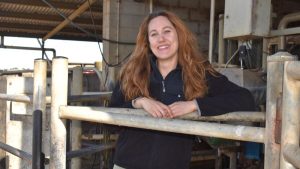
Dairy farm numbers have been declining. But the pace is quickening. Here’s where and why the trend has accelerated.
Australia’s total dairy farm numbers have fallen below the 4000 threshold for the first time in generations, with a six per cent last financial year adding to the industry exodus.
New figures released by Dairy Australia highlight how the national farm tally continues its downward spiral, from 4163 farms in 2022-23 to 3889 dairy enterprises last financial year.
The latest figures, released as part of DA’s annual In Focus report, mean Australia’s total dairy farm numbers have dropped more than 38 per cent over the past decade, with decline pronounced in the seasons following the 2016 clawback by Murray Goulburn and Fonterra.
Queensland farmer Waylon Barron said a range of factors had contributed to the cut in the national dairy tally, with generational change made harder by economic trends.
“If you’re not a generational farmer, it’s harder to get a foot in the door with higher interest rates,” the EastAusMilk board member said.
“The banks need to take a more positive, active role in assisting young farmers. Land prices are rising all around Australia, so young farmers without backing are already behind the game.
“People point to high farmgate prices in recent seasons but input costs have been growing at the same rate, if not faster.”
While Queensland and northern NSW farmgate prices are higher than other parts of Australia, weaker financial returns have also been cited as the factor in the farm tally fall.
South Australian Dairyfarmers Association president Robert Brokenshire said drought in SA and western Victoria had exacerbated fodder prices this season.
“Fodder is always a problem in drought times but there’s also rising electricity prices, labour costs, regulatory costs. Input costs are rising and farmgate prices aren’t keeping up,” he said.
Victorian dairy farm decline outpaced the national rate, with the Garden State shedding more than 40 per cent in the past decade — from 4268 farms in the 2013-14 financial year to 2552 farms statewide last season.
Despite the decade-long deceleration, Victoria still lays claim to nearly two-thirds of Australia’s dairy farms.
NSW is a distant second with 452 farms last financial year, followed by Tasmania on 342 farms, Queensland with 266, South Australia on 170 and Western Australia with 107 farms.
You can now read the most important #news on #eDairyNews #Whatsapp channels!!!
🇺🇸 eDairy News INGLÊS: https://whatsapp.com/channel/0029VaKsjzGDTkJyIN6hcP1K
























